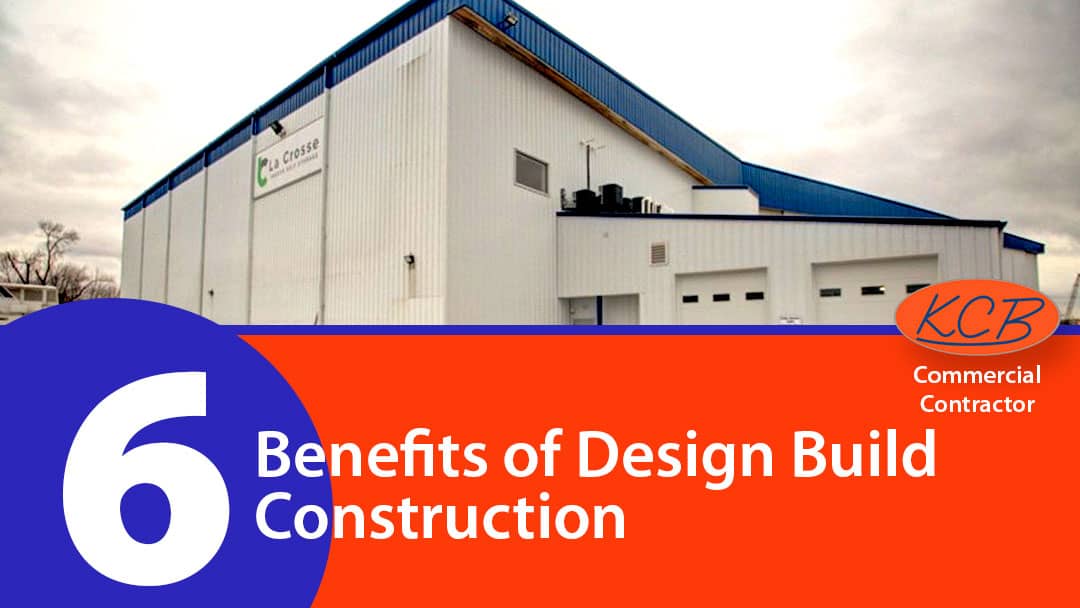
The most vital factor for a successful Design Build commercial construction project is having a trustworthy, skilled, and experienced Design Build contractor.
It’s worth making the effort to find such a contractor because the Design Build method is an optimal choice for your next commercial construction project.
Why is this?
Though there are times when the Design Bid Build method is the more practical choice, overall, the Design Build method offers more potential benefits for you, the customer. (For more information on the reasons why you might choose one method over the other, please see the previous post, Design Bid Build Vs. Design Build.)
What are the benefits of Design Build?
1. Save time and hassle.
Design Build is a streamlined method of construction because you, the customer, have a single point of contact, your Design Build contractor. This saves you time and hassle in several ways.
Working with your contractor from the beginning of your project gives him a clear understanding of your wants and needs. As problems arise or changes need to be made during the course of the project the contractor will have a good idea of how to address them based on his thorough understanding of the project.
As opposed to Design Bid Build, where the contractor is hired after the plans have been designed. In that situation he does not have the complete vision of the project. Any problems or changes will have to go back to the architect or designer and then back again to the contractor, with you as the middleman. This can be a time consuming hassle.
For example: Partway through construction of your project the electrician encounters a problem that will affect the planned layout of your space.
In Design Build, your contractor will address the situation with the electrician and likely be able to come up with some potential solutions to offer you based on his knowledge and understanding of the project. You will work directly with him to resolve the issue.
In Design Bid Build, you would have to go back to the architect or designer and re-work the plans for the contractor. This may involve several back-and-forths between you and your architect and contractor before coming to a resolution. Costing you time and potentially causing frustration.
2. The design can be tailored to fit a specific budget.
In Design Build, you can share your budget needs with your contractor before making any design plans. He can use his experience and knowledge of construction costs to work with you on the design while keeping the budget in mind, which prevents you from creating a design that would be too expensive for you to execute.
For example: You want open ceilings with exposed ductwork in your commercial space. Your contractor knows that this specific design feature will add significant costs to your project and he shares those cost estimates with you. You are able to see right away that it’s too costly for your budget so you opt to not have open ceilings. You then work with your contractor to find other, more affordable options to use in the design.
As opposed to going to an architect first and getting design plans that incorporate open ceilings, only to find out during the bidding stage that this will be too expensive for your budget. Meaning you have to go back to the architect, change your plans, and get new cost estimates.
3. You are not contractually committed to the contractor from day one.
With Design Build, just because you start with a contractor does not mean you have to sign a contract right away.
You can work with your Design Build contractor to create plans and get pricing before signing a contract.
As Marty Kirchner of Kirchner Custom Builders explained, “It’s a road to firm pricing without having to contractually commit immediately.”
This means that if you’re not happy with the final plans and/or pricing provided by the Design Build contractor, you are able to opt out of the project or go elsewhere because you are not under contract.
4. More accurate pricing.
The Design Build method leads to more accurate pricing because specific finishes and materials are selected during the design phase.
Your Design Build contractor knows the specific windows, flooring materials, exterior finishes, fixtures, etc., that you want, resulting in a more accurate price estimate.
As opposed to Design Bid Build where the bidding contractors may not know all of the specific finishes or materials. This means they will most likely need to make assumptions on certain items, which translates to less accuracy in their pricing.
5. Potential Cost Savings.
Design Build requires more cooperation and communication between you and your contractor which helps establish a good working relationship. This could translate to cost savings for you because in situations where items were overestimated your contractor may pass the money saved back to you.
For example: Your project included a budget for masonry of $50,000, but the actual cost ended up at $40,000. That $10,000 difference could go back to you.
Or, if masonry ended up $10,000 under budget and electrical was $4,000 over budget, the net savings of $6,000 could go back to you.
Essentially, if you have a trusted working relationship with your contractor there is an opportunity for cooperation in instances of large budget savings. (That is unlikely to happen with a contractor hired through a bidding process.)
6. Good Service.
With Design Build you are more likely to receive top priority service from your contractor.
As mentioned above, Design Build leads to a strong working relationship between you and your contractor because you work together through every stage of the project, beginning to end.
You get to know each other well and can build a valued relationship. That quality relationship will result in better service.




